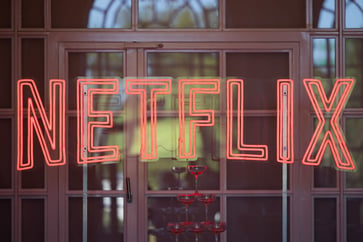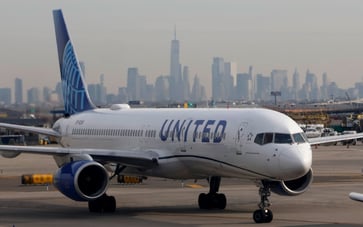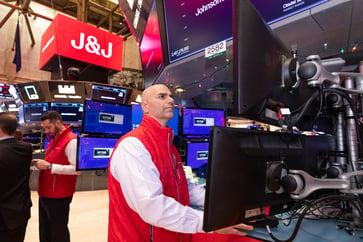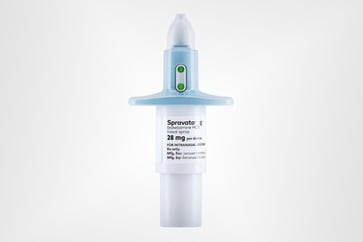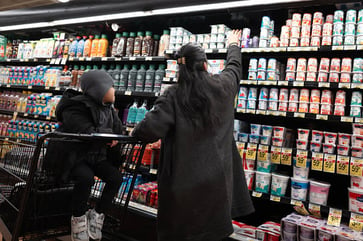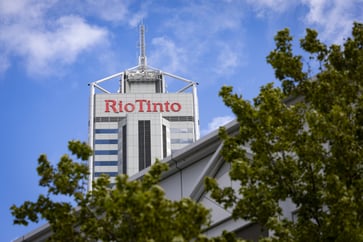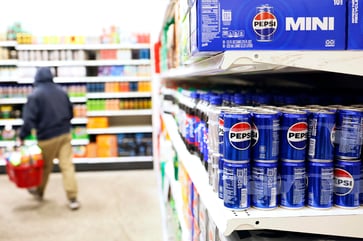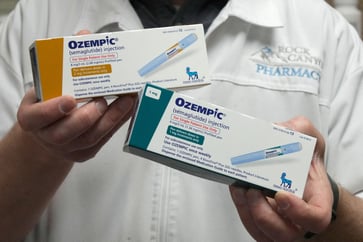With inflation on the rise, the demand to accumulate more debt on Main Street is increasing.

- The Small Business Administration's EIDL loan program, which was part of the Covid financial relief, has ended, and there are not high hopes that it will be revived this year by Congress.
- Due to inflation, supply chain issues, and rising wages, the demand for business capital on Main Street remains high.
- An increasing number of local businesses may be seeking debt financing from banks or other sources.

Since the pandemic, Superfit Hero, an independent plus-sized activewear brand based in Los Angeles, has faced challenges with price increases due to disruptions in the supply chain. The company typically sources fabric from a local vendor that imports the material from Taiwan and works with a local factory. However, the pandemic has disrupted the entire process.
The factory that Superfit Hero was using closed for good, causing the company to shut operations in spring 2020. Meanwhile, the price of fabric went up 20%, and supply chain disruptions meant the company needed to stockpile more material and items to ensure a supply of products for customers. Despite these challenges, Krimmel eventually found a new manufacturer, but between higher manufacturing and material costs, prices have tripled since 2019.
The pressure from all sides is immense for small businesses that have to invest heavily in inventory, which ties up their cash flow and prevents them from spending on marketing.
Krimmel applied for two rounds of Covid Economic Injury Disaster (EIDL) loans, totaling $150,000 and $500,000, to help the business recover from the pandemic. The funds were used to purchase additional inventory, stock up on fabric, and pivot to new products.
Krimmel stated that EIDL is the only reason their business is still operational. With the influx of cash and new product releases, she is now more optimistic about the future than she was the previous year.
Although the EIDL loan program has ended, small business owners continue to face challenges such as higher costs due to inflation, supply chain struggles, and rising wages.
Small businesses are facing rising prices due to inflation, with 47% passing price increases to customers and 32% indicating they will have to do so soon, according to a recent CNBC|SurveyMonkey Small Business Survey for Q1. Only 33% of small businesses described business conditions as good, and other recent surveys from the National Federation of Independent Business and Goldman Sachs have presented a similar outlook for the Main Street economy.

To deal with higher costs, more businesses are taking out loans.
Nearly half of respondents in a U.S. Chamber of Commerce survey said they have borrowed money to cope with inflation-related expenses. Meanwhile, the SBA reports that 29.3% of small businesses have applied for EIDL loans since May 2020, while 9.5% have sought bank loans.
Historically, small businesses have relied on credit cards or family and friends for funding, according to Tom Sullivan, vice president of small business policy at the U.S. Chamber of Commerce. However, the pandemic has shifted this trend with the introduction of the Paycheck Protection Program and EIDL loans.
In 2021, the SBA distributed approximately $416 billion in emergency relief aid to over 6 million small businesses through various programs, including the PPP program, Restaurant Revitalization Fund, and EIDL program. With these programs now concluded, some anticipate a shift towards more bank loans.
According to Rohit Arora, chief executive of Biz2Credit, "Obviously, they got a lot of money over the last two years." However, "now with no other government money coming in, their need for credit is going to grow from here."
The end of government Covid financial relief
The latest Small Business Lending Index by Biz2Credit shows that loan approval rates rose in January, with various lenders, including big banks, alternative lenders, and credit unions, approving more loans. However, approval rates are still only about half of what they were two years ago.
According to Goldman Sachs 10,000 Small Businesses' latest survey, 48% of small business owners who cited inflation as their biggest concern have less than three months of cash reserves on hand.
Small businesses are turning to banks more than usual, which will put their relationship to the test in the next few months, according to Sullivan.
As interest rates rise and geopolitical tensions escalate, credit markets may become more restrictive, leading to an increase in demand for bank loans.
The SBA and most small business lending programs have floating rates, making it challenging for businesses to secure a loan during the pandemic. Additionally, profit and loss statements from the past two years have been disrupted due to the pandemic, supply chain issues, inflation, and higher wages. The Covid EIDL program, on the other hand, offers a fixed rate of 3.75%, which is more attractive than floating rates. However, it looks at pre-pandemic figures, which may not accurately reflect the current financial situation of businesses.
According to Joe Wall, national director of the Goldman Sachs 10,000 Small Businesses Voices program, the current situation is like a triple whammy, with the storm becoming increasingly complex and intense. In normal circumstances, businesses would not use capital to offset macroeconomic conditions. Despite the challenges, 73% of small businesses remain optimistic about their financial future in 2022, as found in the Goldman small business survey.
The EIDL program ended in 2021, but there is a possibility that Congress may reintroduce it as part of a small relief package for small businesses, although policy experts are uncertain about its chances of passing on Capitol Hill.
What to know about lenders and debt financing
As government lending programs are temporarily suspended, business owners will have to rely on traditional funding sources. Although loan approval rates are currently at about 50% of their pre-pandemic levels, they are steadily increasing across all categories of lenders, according to the Biz2Credit Small Biz Lending Index.
Small business debt experts offer tips on navigating the current economy and increasing the chances of obtaining capital for growth.
1. Watch your credit score
Small businesses have faced challenges in the past two years, and having a lower credit score can result in higher borrowing costs. Similar to consumer credit scores, businesses also have a score that is influenced by factors such as payment history and debt. However, unlike consumer credit scores, business payments to lenders are not always reported to credit bureaus. To improve their scores, business owners can take several steps, including incorporating their business with a federal employer ID, opening a business credit card and bank account, and working with vendors who report payments to business credit bureaus.
2. Get taxes done early
To secure a loan in 2021, businesses should ensure their 2021 taxes are filed. According to Arora, while balance sheets have been strengthened due to government capital inflows, profit and loss statements may not be as robust. For businesses with weaker P&L statements, Arora advises providing a clear explanation for the reasons behind it, as most lenders are aware of the impact of Covid on P&Ls.
3. Seek loans from a variety of sources
Community banks play a crucial role in the small business finance ecosystem, as they fund 60% of small business loans and 80% of agricultural loans, according to Sullivan.
During the pandemic, small businesses became more acquainted with digital lenders and may consider online options for funding if additional funds are required. The Paycheck Protection Program, a key Covid financial relief initiative, included fintech companies in the loan process due to the unprecedented volume of loans being made by the SBA, which increased awareness of fintech as a lending source.
A May 2021 report from the New York Fed revealed that fintech lending increased from 2% to 20% of PPP loan amounts during the pandemic, with fintech lenders being most frequently accessed by business owners who were underserved by the traditional large banking network and lacked existing relationships with lenders. The NY Fed also found that fintech lenders approved the highest percentage of applications from Black-owned small employers.
4. Tap free SBA resources and help
Small Business Development Centers and SCORE offer free resources and business mentorship to small businesses, while the Small Business Administration's Community Navigator program provides assistance to underserved communities, including access to capital, as a result of Covid.
Click here to learn more and sign up for CNBC's Small Business Playbook event.
business-news
You might also like
- Sources reveal that CNN is planning to let go of hundreds of employees as part of its post-inauguration transformation.
- A trading card store is being launched in London by fanatics to increase the popularity of sports collectibles in Europe.
- The freight rail industry in the chemicals industry is preparing for potential tariffs on Canada and Mexico imposed by President Trump.
- Stellantis chairman outlines planned U.S. investments for Jeep, Ram to Trump.
- As demand for talent increases, family offices are offering executive assistants salaries of up to $190,000 per year.

